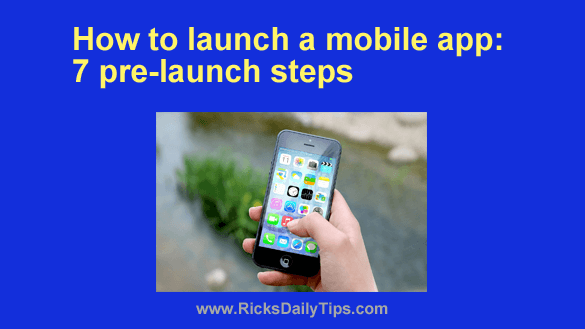 There are millions of applications in the market, and each one is unique from the other. Many industries and consumers give rise to the higher demands of applications.
There are millions of applications in the market, and each one is unique from the other. Many industries and consumers give rise to the higher demands of applications.
The goal for every developer is to make something that offers value to the market, and in turn, makes things profitable and sustainable.
The increase in the demand and market in applications also means a congruent demand for other services that also cater to application development. Businesses that offer mobile application testing services are as relevant as ever.
In 2023, statistics estimate that there will be a surge of demand for apps amounting to as much as 935 billion USD in revenue. From the Apple App Store alone, there are 3.75 million applications available. If you ever want to develop and launch your created application, here are some pre-launch steps to help set your app before the actual launch. Let this guide help you in commencing your application in the mobile space.
Here are the seven steps to take to ensure the successful launch for an app:
1 -Do Market Research
Conducting pre-launch market research saves time in figuring out your competition after the launch. Before launching the application to platforms, it’s best to know the direct and potential competitors of the app. In this stage, you also need to strategize on tackling the competition and market your application to the target market. Some of the questions you can assess are the following:
- Which apps are the main competitions of the application?
- What mistakes did these competitor apps make in the past?
- Is there something else in the app that can bring in more users than the competition app?
- Is the app valuable and scalable?
- What are the necessary targets for the app to perform well with big players?
2 – Test the current version of the app
Testing covers all the potential loopholes in the application. While market behavior can rarely be predictable, you can always address and solve the technicalities of the mobile app. From crashes to errors and bugs, the testing stage brings a lot of feedback and insight to the developing team.
Consider the testing team as the app’s first users, assessing your application’s design, functionality, and value. There are tons of testing services to evaluate, modify and give first-hand recommendations of the mobile app.
3 – Early launch or soft launch the app
While testing can cover the application, there is no such thing as a perfect testing stage. It would be best if you had the courage to early launch or soft launch the app to make sure you get insight from the actual target market rather than the testing team. Tap in your family, friends, colleagues, and customers to try your application.
The key is to find the potential group of people using the application for the long term. Since your goal is to have a valuable application that stays relevant when hundreds of apps are launched every day, it’s best to find the potential niche user.
4 – Create a website or online presence for the app
The worldwide web has a lot of potentials and uses in establishing an application’s presence. Consider online presence as an investment for the marketing of the application. After all, how will people know about the application online efficiently, except through online strategies?
If you can, invest in a good website that showcases the application. Use SEO strategies to land the website in top searches so people can already see the Application Platform (App Store, Google Play, etc.) in which the mobile app is present. Then, solidify that website by connecting social media platforms for higher reach and recognition.
5 – Use App Store Optimization
The App-Store Optimization is like the SEO of the application, except it’s on the pages of the Application Platform. The presence of the application in the Apple App Store, Google Play, and other Application Platforms affects how the app can reach mobile phone users who aren’t necessarily looking for the application.
From picking a name, descriptions, and keyword selection, optimize the App Store page of the mobile app. You can do this by providing the application information, discussing privacy and data collection regulations, or presenting the different types of services (such as subscription services) that your developing team can offer.
6 – Set up In-App Analytics to analyze user behavior
In-App Analytics may be the most data technical part of the pre-launch process. Getting the right analytics tools embedded in the mobile app can help you understand and track the application’s user experience.
Look out for the relevant Key Performance Indicators of the app, crash reports, and issues. As this stage still covers the pre-launch users of the application, you can get enough data to modify and improve the app before further release.
7 – Select an official app launch date
The last part is to select the official launch of the application. After all the pre-launch steps and changes, the developing team makes the app more ready for a bigger audience and users. Don’t forget to update the application’s website and social media platforms to help increase the app’s user acquisition.
Conclusion
There is no perfect way to launch an application. The critical method is preparation and planning. As you move along the steps and encounter more things about the mobile app, you may learn how to improve the app. As there is no mobile app set in stone, doing the necessary changes can translate to a higher value in the future with a lot of possibilities.